Hold onto your butterfly nets, folks! We're about to dive into the world of North America's most underappreciated lepidopterans: the white butterflies. Sure, they might not have the pizzazz of a Monarch or the star power of a Swallowtail, but these pale flyers are the unsung heroes of our gardens, fields, and forests. From the ubiquitous Cabbage White to the elusive West Virginia White, these species pack a punch in both ecological importance and subtle beauty. So, buckle up as we explore five of the coolest white butterflies fluttering around our continent. Trust us, by the end of this, you'll be team Whites!
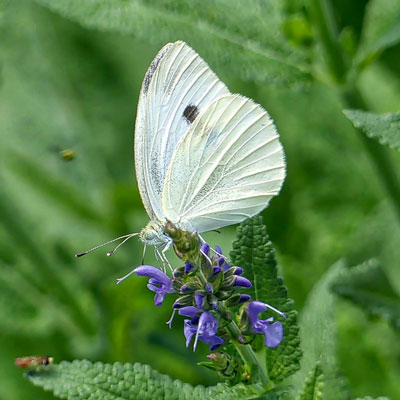
Cabbage White (Pieris rapae)
- Boys vs. Girls: The fellas sport a single black spot on each forewing, while the ladies double up with two. Both rock white wings with a hint of yellow underneath—simple, but effective.
- Home Turf: These guys are the globetrotters of the butterfly world, fluttering from southern Canada to Mexico. You'll find them just about everywhere.
- Favorite Fuel: Clover, dandelion, mustard, asters—if it's got nectar, they're in.
- Egg Drop Spot: The ladies lay their eggs on any member of the mustard family, from cabbage and broccoli to kale and wild mustards.
- Caterpillar Chow: Meet the cabbage worms—tiny green munching machines that make veggie gardeners shudder. They stick to mustard family plants, devouring leaves like there's no tomorrow.
- Behavior: These butterflies are known for their erratic, fluttering flight pattern. They're often seen in gardens and open areas, darting from flower to flower.
- Habitat: Urban gardens, fields, meadows, and just about anywhere with flowering plants.
- Flight Period:
- In warmer regions: Almost year-round
- In colder areas: Spring to fall
- Winter Stage: Pupa
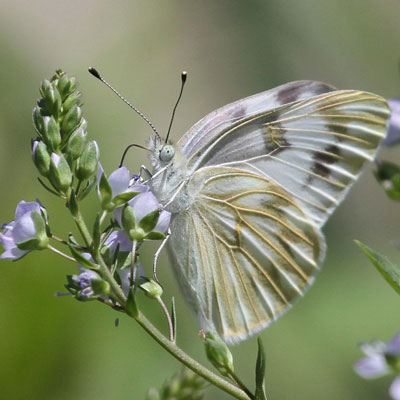
Checkered White (Pontia protodice)
- Boys vs. Girls: The guys are whiter with sharp black accents, while the gals go for a more muted look with grayish or brownish checkered patterns.
- Home Turf: Mostly in the southern U.S., these butterflies are all about open fields and disturbed areas. They sometimes venture up to southern Canada when they're feeling adventurous.
- Favorite Fuel: Asters, dandelions, wild mustard—they're all fair game.
- Egg Drop Spot: Mustard family plants are where the magic happens, with a preference for wild species.
- Caterpillar Chow: The larvae chow down on mustard plants, but they lean toward wild types like peppergrass. They're the wild child of the bunch.
- Behavior: Often seen basking with wings spread flat on the ground. They're strong fliers and can migrate short distances.
- Habitat: Open, dry areas like fields, roadsides, and vacant lots.
- Flight Period:
- South: Multiple generations from spring to fall
- North: Typically two generations, late spring and late summer
- Winter Stage: Pupa
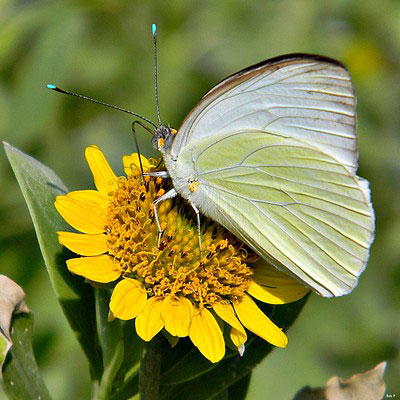
Great Southern White (Ascia monuste)
- Boys vs. Girls: Both sport white wings with black wingtips, but the ladies sometimes mix it up with a bluish-gray tint on their forewings.
- Home Turf: These butterflies dig the Southeast, especially Florida and the Gulf Coast. Their range extends all the way into Central and South America.
- Favorite Fuel: Saltwort, lantana, verbena—these guys love the coastal blooms.
- Egg Drop Spot: They stick to the cabbage family, with a soft spot for saltwort and other coastal plants.
- Caterpillar Chow: The larvae stick close to home, munching on coastal plants like saltwort, along with your garden cabbages.
- Behavior: Known for their strong, direct flight. They often form large migratory swarms along coastal areas.
- Habitat: Coastal areas, including beaches, dunes, and nearby fields.
- Flight Period: Year-round in tropical areas, spring to fall in more temperate regions.
- Winter Stage: Active year-round in warm areas; pupa in cooler regions.
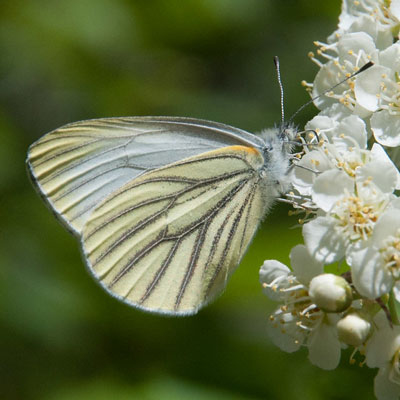
Mustard White (Pieris oleracea)
- Boys vs. Girls: They look pretty similar, but the ladies are a touch larger and might have more prominent black markings.
- Home Turf: Found in the northeastern U.S., parts of Canada, and some western states, they prefer wooded areas and streamside hangouts.
- Favorite Fuel: Woodland flowers like wild mustard, garlic mustard, and violets—these are their nectar of choice.
- Egg Drop Spot: Mustard family plants, especially wild mustard and garlic mustard, are their preferred nurseries.
- Caterpillar Chow: The larvae stick to the plan, munching on wild mustard and garlic mustard leaves. Simple and to the point.
- Behavior: Generally fly low to the ground and are less likely to visit gardens than their cabbage white cousins.
- Habitat: Moist woodlands, forest edges, and stream banks.
- Flight Period:
- Northern areas: One generation, late spring to early summer
- Southern parts of range: Two generations, spring and summer
- Winter Stage: Pupa
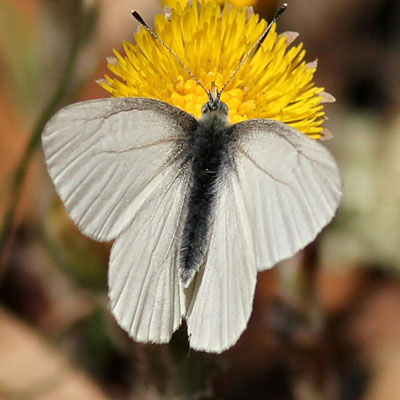
West Virginia White (Pieris virginiensis)
- Boys vs. Girls: Both are creamy white with subtle gray or brown touches, but the ladies tend to be a bit bigger with more detailed markings.
- Home Turf: They're Appalachian through and through, sticking to moist, deciduous forests in the eastern U.S.
- Favorite Fuel: Woodland flowers like violets, spring beauty, and toothwort are their go-to nectar sources.
- Egg Drop Spot: Toothwort and other mustard family plants get the job done for egg-laying.
- Caterpillar Chow: The larvae are picky eaters, sticking to toothwort and native mustards. It's all about those local flavors.
- Behavior: Tend to fly close to the ground and rarely venture far from their woodland habitats.
- Habitat: Rich, moist deciduous forests, especially those with abundant spring wildflowers.
- Flight Period: Single generation, flying for a short period in early spring.
- Winter Stage: Pupa
White butterflies might not have the flash of their colorful cousins, but don't sleep on them. These understated beauties are crucial players in the ecosystem, each with its own vibe, habitat, and favorite hangouts. Give them the right plants, and you'll not only boost their populations but also add a subtle charm to your garden. Trust us, the white butterflies are worth it.





























































































































































































































































































































































































































































































































































































































































